
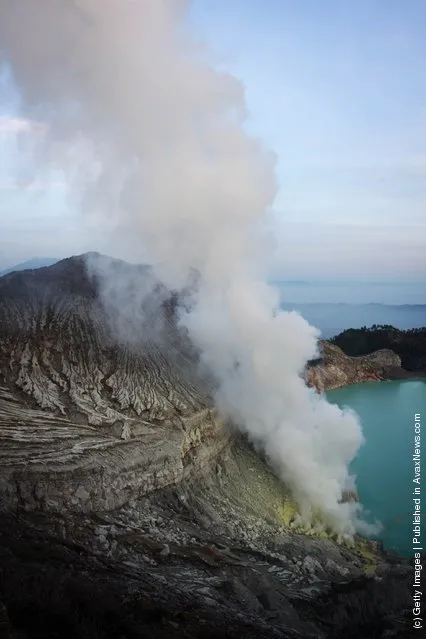
The Ijen Crater is shown on May 24, 2009 outside Banyuwangi in East Java, Indonesia. The Ijen crater rises to 2,386m, with a depth of over 175m, making it one of the world's largest craters.
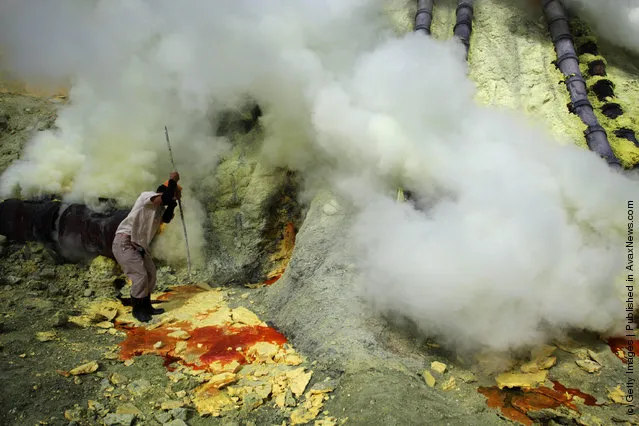

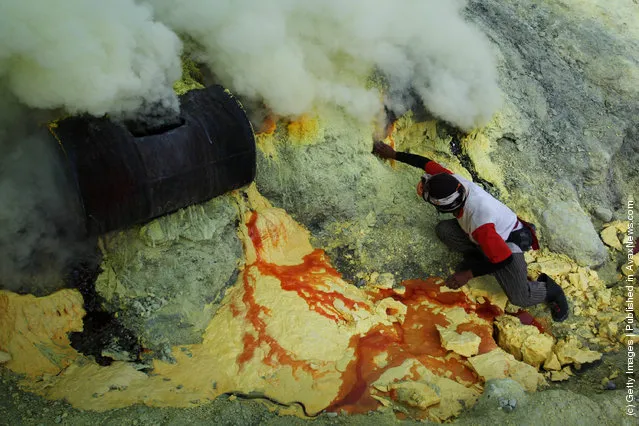
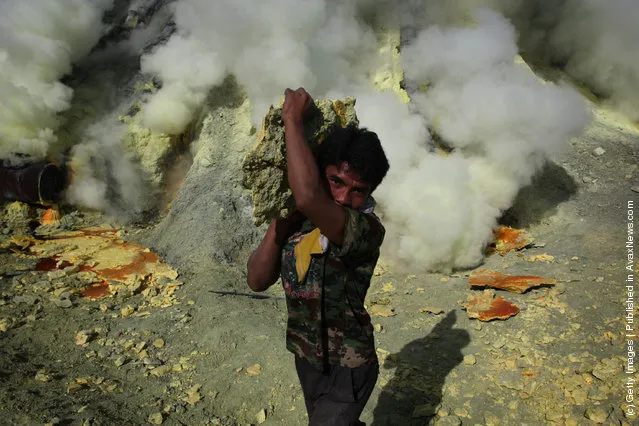
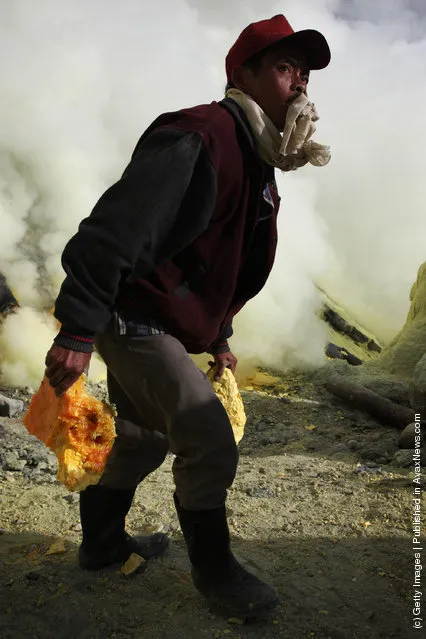
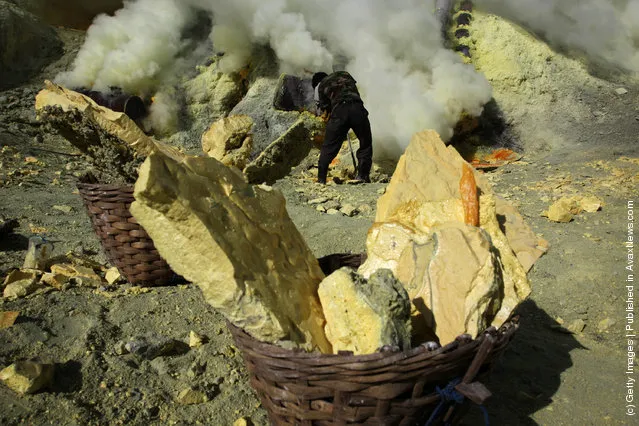
A traditional miner extracts sulphur from pipe at the flow crater at the Ijen volcano complex on May 24, 2009 in East Java, Indonesia. Sulphur mining is a major industry in the region, made possible by an active vent at the edge of a lake, but the work is not without risks. (Photo by Ulet Ifansasti/Getty Images)
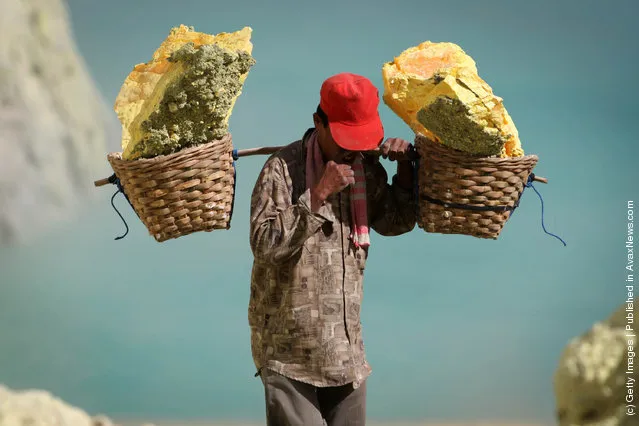
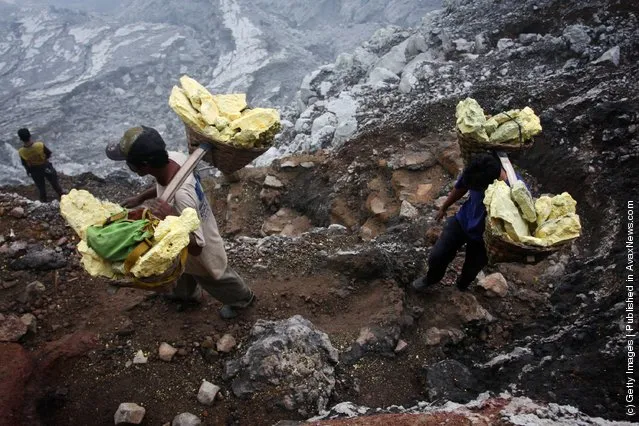
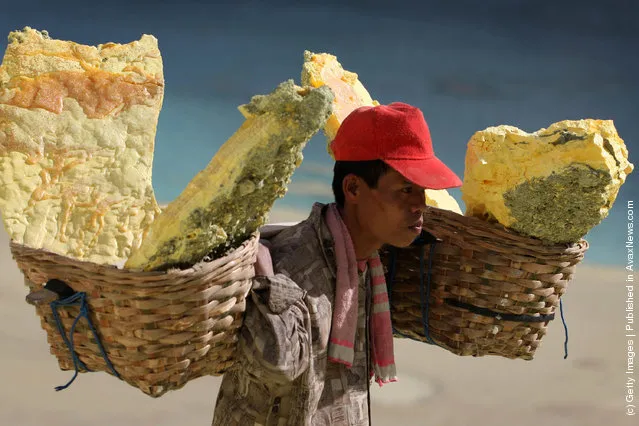
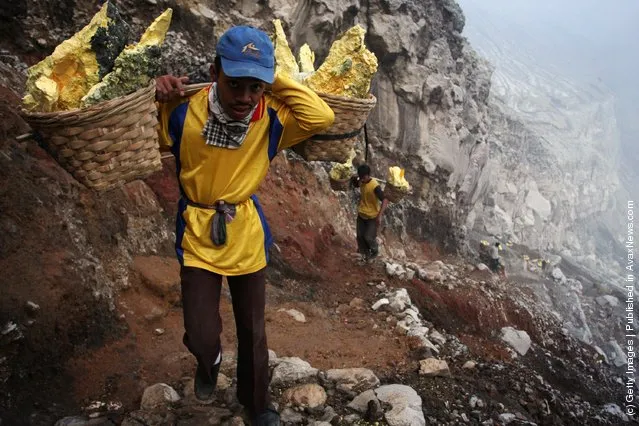
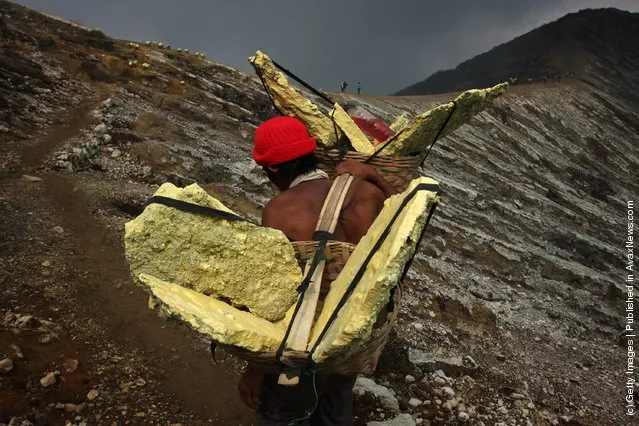
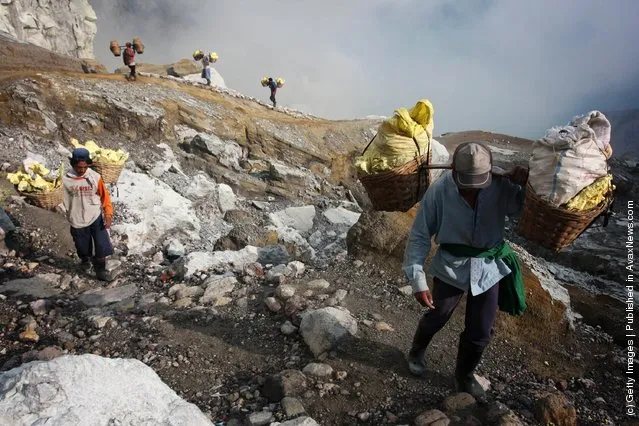
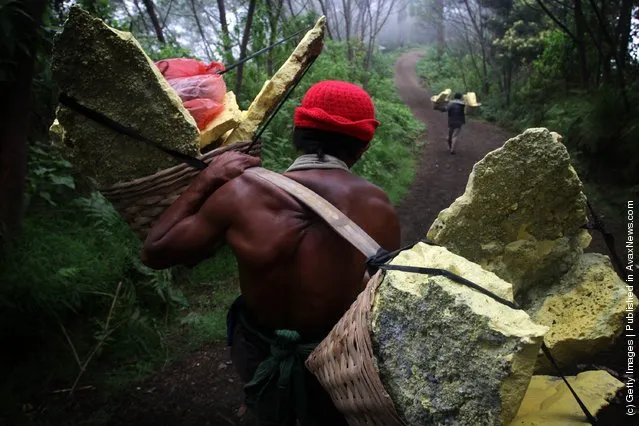
Traditional miners carry sulphur on the Ijen volcano complex on May 25, 2009 outside Banyuwangi in East Java, Indonesia. The acidity of the water in the crater is high enough to dissolve clothing and cause breathing problems. Miners carry the solidified yellow sulphur blocks from the crater floor to the rim for as many hours a day as they can tolerate, paid by the kilogram of sulphur they extract. (Photo by Ulet Ifansasti/Getty Images)
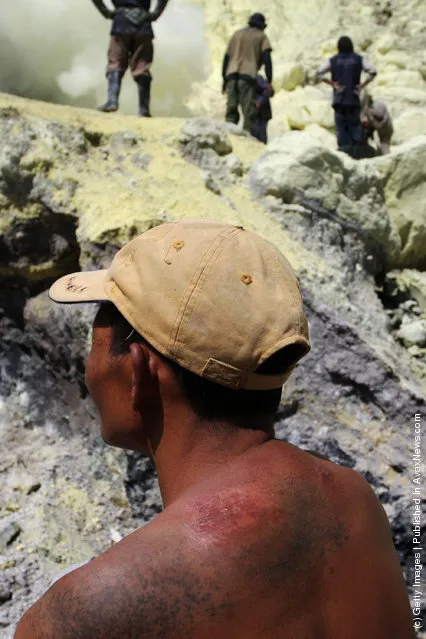
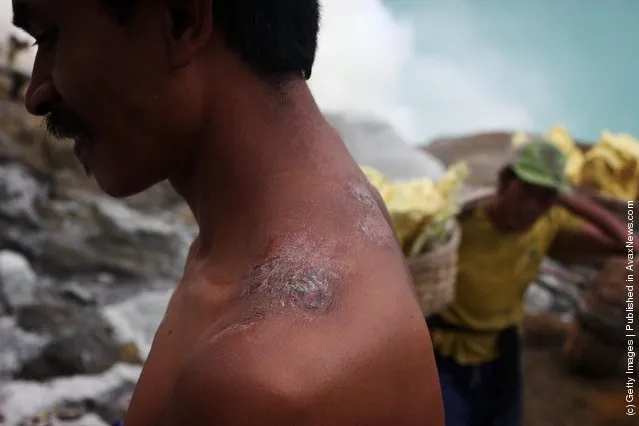
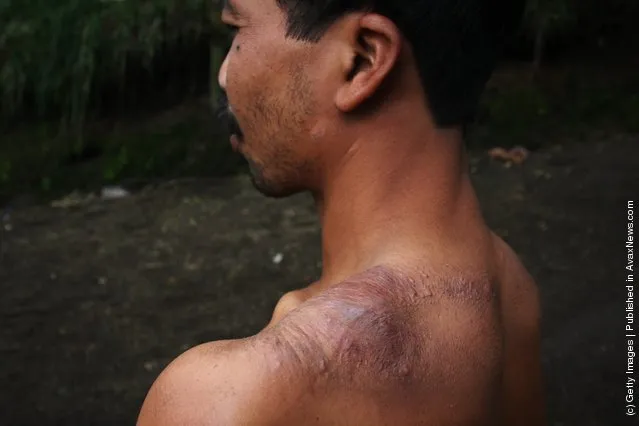

A traditional miner shows injuries sustained while carrying sulphur from the Ijen volcano complex May 24, 2009 in East Java, Indonesia. (Photo by Ulet Ifansasti/Getty Images)
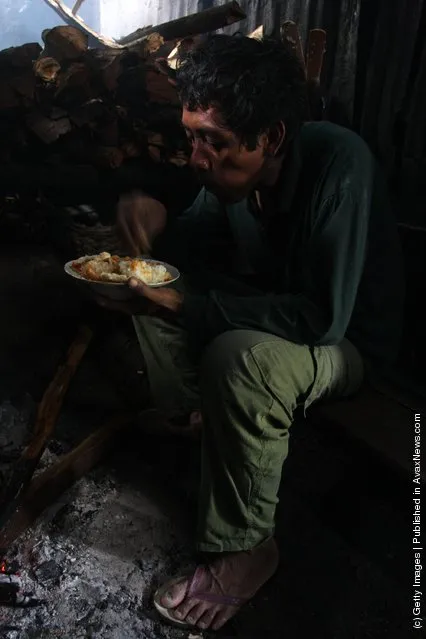
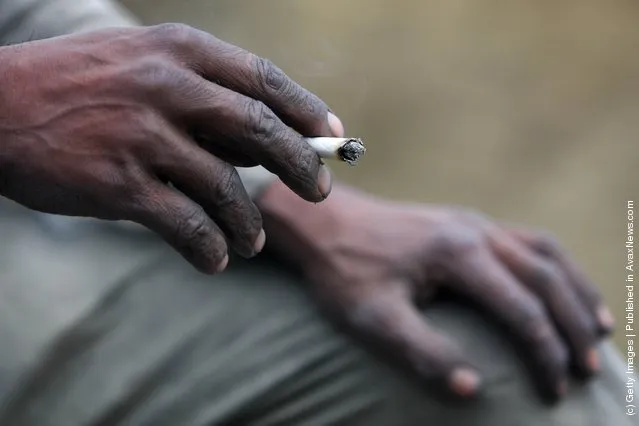
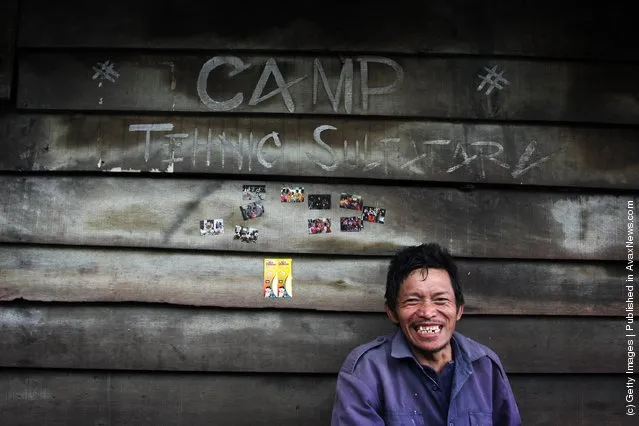
A traditional sulphur miner relaxes at base camp dubbed Camp Sulfutara on the Ijen volcano complex on May 24, 2009 outside Banyuwangi in East Java, Indonesia. The average wage is USD $.05 per kilogram of sulphur and a worker, depending on his strength and stamina, carry on average 3 baskets of 70-80kg per day, earning him around USD $11. (Photo by Ulet Ifansasti/Getty Images)
08 Jul 2011 10:53:00,
post received
0 comments
